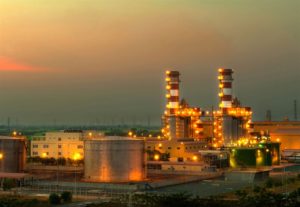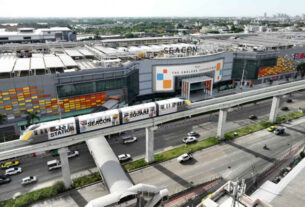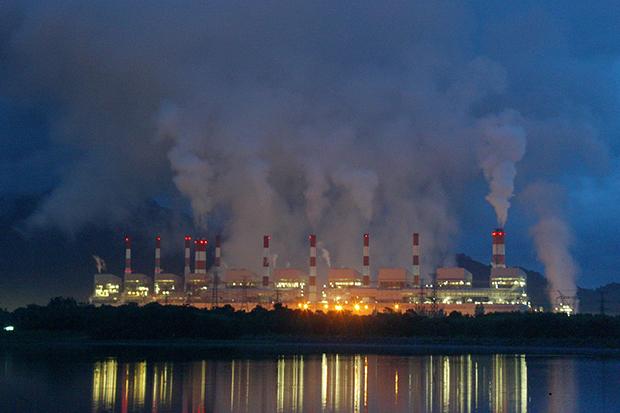
Vietnam’s gas-fired power projects see flurry of interest from US LNG exporters
Market potential, geopolitics drive US interest in Vietnam projects
Vietnam could import 8.5 million mt/year of LNG by 2030, 23.6 million mt by 2040: VEI
21 million mt/year of US LNG under construction remains uncontracted: Platts Analytics
Vietnam’s pipeline of LNG-fired power plants has seen a flurry of interest from US LNG exporters, with at least eight projects with preliminary agreements signed to date, which could turn the Southeast Asian country into a major destination for US natural gas if things go as planned.
The recent rush is partly to make it into the country’s National Power Development Plan VIII, which the energy ministry expects to submit to the prime minister by October for approval. There is also the realization that Southeast Asia is a growth opportunity for new LNG demand amid worsening US-China tensions that makes the China market hard to tap.
Vietnam’s declining gas production and offshore exploration challenges in the South China Sea amid territorial disagreements with Beijing also make US LNG an energy security hedge. In addition to LNG supply, US companies engage in financing and plant construction.
“Under the Indo-Pacific Strategy and Asia EDGE [Enhancing Development and Growth through Energy] initiatives, the US Government continues to work closely with US industry to advocate for US businesses seeking to develop, or contribute to the development of key LNG infrastructure projects in Vietnam,” Rachael Chen, spokeswoman for US Embassy Hanoi, told S&P Global Platts in an email statement.
“We are particularly interested in those projects that seek to source US LNG as a long-term fuel source that can contribute to Vietnam’s energy security,” Chen said, adding that the US government is working with the private sector through an ‘all-of-government’ approach.
Power demand in Vietnam rises by roughly 10% each year. Vietnam plans to replace part of its coal pipeline with LNG and the first regasification terminal is expected in 2021.
Vietnam’s last PDP aimed at the share of gas-fired power in the electricity mix reaching 15.6% of 96.5 GW by 2025 and 14.7% of 129.5 GW by 2030. While these will be updated in the new PDP VIII, around 3.5 GW could be based on imported LNG by 2025-26.
BUYERS WANTED
A researcher with Vietnam Petroleum Institute, which advises PetroVietnam and the government, cited three reasons for US interest in Vietnam — US LNG needs to compete with exporters like Qatar and Australia, Vietnam’s demand potential, and the US-Vietnam trade deficit.
The Trump administration has demanded a narrowing of the trade deficit of more than $46 billion in 2019. A 1 GW capacity plant could import around 1 billion cubic meters/year of LNG worth $200 million at $6/MMBtu, said the researcher, who declined to be identified.
Many US LNG projects are also actively seeking buyers.
“Of the [US] projects that are already under construction, Platts Analytics calculates that there is 21 million mt/year of capacity that is not currently tied to downstream buyers, with another 10.5 million mt/year of uncontracted capacity associated with expansions which haven’t reached FID,” said Jeff Moore, Manager for Asian LNG Analytics at S&P Global Platts.
He said US uncontracted volumes are significant, but projects that haven’t reached FID are likely to be more concerned.
“I don’t think there is necessarily uncertainty from China, but their appetite for contracted capacity is probably less, which means sellers have to look elsewhere, and they are able to offer flexible terms with prices linked to a relatively low and stable benchmark,” Moore said, adding that Southeast Asia was an obvious target.
Backing from national oil companies like PetroVietnam helps. The feasibility of Vietnamese projects lies mainly in the power purchase agreement with state electricity regulator EVN, which ensures profitability for long-term projects, Vietnam Petroleum Institute’s researcher said.
Vietnam has potential to build 108.5 GW of LNG-fired power capacity, including 38.75 GW in the south, 41.75 GW in the central region and 28 GW in the north, according to the Vietnam Energy Institute or VEI, an arm of the Ministry of Industry and Trade that advises the government on energy policy. This is yet to be confirmed by the PDP VIII.
VEI estimates that Vietnam will import 1.2 million mt of LNG by 2025, 8.5 million mt by 2030, 17.2 million mt by 2035, 23.6 million mt by 2040 and 29.6 million mt by 2045.
US-BACKED PROJECT PIPELINE
PV Gas and US Alaska Gasline Development Corp. in 2017 signed a preliminary agreement for LNG supply. The 3.2 GW Bac Lieu LNG-to-power project by Hanoi-based Delta Offshore Energy remains interested in US LNG despite a recent agreement expiring.
Other projects linked to US LNG include the US AES Corp.’s 2.2 GW Son My 2 plant, Chan May LNG’s 4 GW plant in Thua Thien-Hue province, Millennium Petroleum’s 15 GW plants in Thanh Hoa and Khanh Hoa provinces in central Vietnam and Energy Capital Vietnam’s Mui Ke Ga project in Binh Thuan province.
Exxonmobil said it will build a 4 GW plant in the coastal city of Hai Phong and a 3 GW plant in Long An with US LNG supply.
These total a whopping 35 GW of US LNG-fired capacity, but so far only Bac Lieu and Son My 2 have government approval, and many of the other early-stage proposals may not materialize.
Source: https://www.spglobal.com/platts/en/market-insights/latest-news/coal/082720-analysis-vietnams-gas-fired-power-projects-see-flurry-of-interest-from-us-lng-exporters



